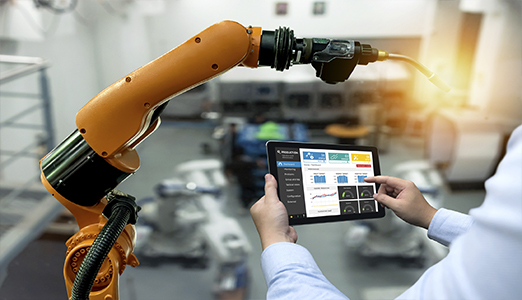
Recently, I wrote the following article: “What U.S. Workers Think about Automation.” If you did not have a chance to read that article, I encourage you to do so. It includes new data about how automation affects the U.S. workforce, even showing which industries are most and least impacted.
Today, automation has already affected 25% of the workforce, with IT and engineering most impacted, and customer service least impacted. To see more stats about automation, you can read the article; to see more stats about automation and the current state of the workforce, you can read our “The U.S. Workforce Report.”
Consider this article as a follow up to the aforementioned article. Here, I will discuss how your company can react to automation with your employees top of mind. Specifically, how you can work to calm your employees’ nerves and help them adapt to—even benefit from—this technological evolution.
But before we discuss the “how,” it is worth mentioning that the timing of this article is no coincidence. Automation—thanks to technological advancements in robotics that enable companies to reduce costs and save time—is growing at a rapid pace. While it will inevitably eliminate some U.S. jobs (perhaps over 30% by 2030), it will undoubtedly create other jobs (history shows ATMs actually created more bank teller jobs). Not to mention, automation may make some workers feel sick. Regardless of what happens with jobs or how America’s workers feel, the impact is evident and only growing. Now, more than ever, is the appropriate time to discuss it.
Having stated that, here are four ways you can help your employees adapt and be positively affected by this evolution.
1) Be transparent.
It is always prudent of you to be transparent with your employees and to make sure that transparency permeates your entire hierarchy. It is also your ethical responsibility to be open and honest with your employees. Regarding automation, this is magnified.
As we mentioned above, some of America’s workers are literally getting sick from their fear of robots taking over their jobs. Transparency can serve to alleviate workers’ concerns. As a business leader, you should communicate to them, collectively, how you anticipate automation will affect your business. You should also communicate to them, individually, how automation is certain to affect their specific jobs.
2) Be specific.
In addition to being transparent, you should be specific. It almost always behooves you to be specific when addressing your employees, and that holds true with automation. Being vague when you proactively communicate—and being evasive when employees ask you questions—is going to induce stress and feelings of uncertainty.
Become and remain specific in all communication around the topic. When you discuss how automation will impact your business in both the short- and long-term, be as specific as you possibly can. Explain the justification of implementation, provide tangible examples, and share case studies. If you do reach a point where you lack information or enough specificity to answer a question, be honest and answer the question in the future.
3) Be personal.
The last “Be…” on our list and perhaps the most vital. In your transparent, specific communication efforts, you will inevitably encounter moments that require personal, one-on-one conversations. There will be a time when new workplace mechanization does not just affect overall output; there will be a time when that same mechanization also affects individual jobs. Then, it is time for you to get personal.
When you know exactly how automation will affect an employee, it is time to have an in-person conversation with that employee. Explain how the technology affects their position, regardless of the outcome: less responsibility, more responsibility, job opportunity, job elimination, etc. And discuss how you will help them adapt.
4) Reinvent skills—and work.
Whether the outcome is positive or negative, consider how it will alter employees’ skill sets. Will their current creativity and reasoning skills complement artificial intelligence? Does their current skill set lend itself to another more in-demand position less affected by automation? Does the technology eliminate their job, leaving you with the onus of training them and equipping them with new, transferrable skills, whether within the confines of your business or at another business?
It would behoove you to have formal programs in place to address the evolution of automation in your workplace. To efficiently and cost-effectively shift workers around and assess the success of said moves. It is your duty to your business to maximize the effectiveness of the combination of your human and technological resources. And it is your duty to your workforce to prepare individuals for the future of work at your business and beyond.
Primary Takeaway
Instead of recapping previous statistics or how you can help your employees adapt to automation, I will leave you with a quote from Marjory Blumenthal, Director, Science, Technology, and Policy at RAND Corporation, along with a question of my own.
“In a given context, automated devices like robots may displace more than they create. But they also generate new categories of work, giving rise to second- and third-order effects. Also, there is likely to be more human-robot collaboration—a change in the kind of work opportunities available…”
My question to you is this: Are you ready for that “change in the kind of work opportunities available?” More importantly, are your employees ready?
